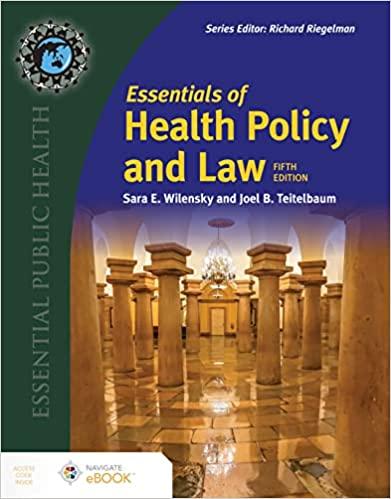There was a lengthy debate about whether to include a public option in health reform. A public
Question:
There was a lengthy debate about whether to include a public option in health reform. A public option is some type of government-run health plan that would be available to compete with private plans. A public option could exist either within the health exchange model or outside of it. Instead of a public option, Congress voted to require the Office of Personnel Management, which runs the Federal Employees Health Benefits program, to contract with at least two multistate plans in every state health insurance exchange. While President Biden has voiced support for a public option, it has not been a top priority to date and is unlikely to be politically feasible at the federal level (Lieberman, 2021).
States are stepping into the gap left by federal policy. As of June 2021, three states (Colorado, Nevada, and Washington)
have created a public option with the hope of reducing healthcare costs. While each state public option varies in the details, the general idea is the same. In the state version of a public option, states contract with private companies to create new insurance options that are regulated by the state government. Public option plans sell products in the ACA marketplace and follow ACA private insurance rules.
In state public option plans, costs are lowered by requiring premiums that are lower than the state exchange benchmark plan and linking provider reimbursement to Medicare or Medicare-plus-a-percentage, instead of using higher private insurance rates. Of course, providers may balk at joining a plan with lower reimbursement, so states must find ways to incentivize participation. In Nevada, for example, insurers that offer Medicaid managed care plans also need to participate in the public option.
Similarly, Nevada providers who accept Medicaid, workers’
compensation, or the state employee health plan must also accept the public option plan. States would prefer to keep the savings to reinvest in their healthcare systems and are requesting federal waivers to do so.
What are the pros and cons of having a public option? Does the Office of Personnel Management compromise achieve all or some of the goals of having a public option? Why do you believe the Office of Personnel Management compromise was acceptable to legislators but the public option was not? Is it preferable to have public options developed at the state level?
What are the pros and cons of a state versus federal public option? Data from

Step by Step Answer:

Essentials Of Health Policy And Law
ISBN: 9781284247459
5th Edition
Authors: Sara E. Wilensky, Joel B. Teitelbaum





